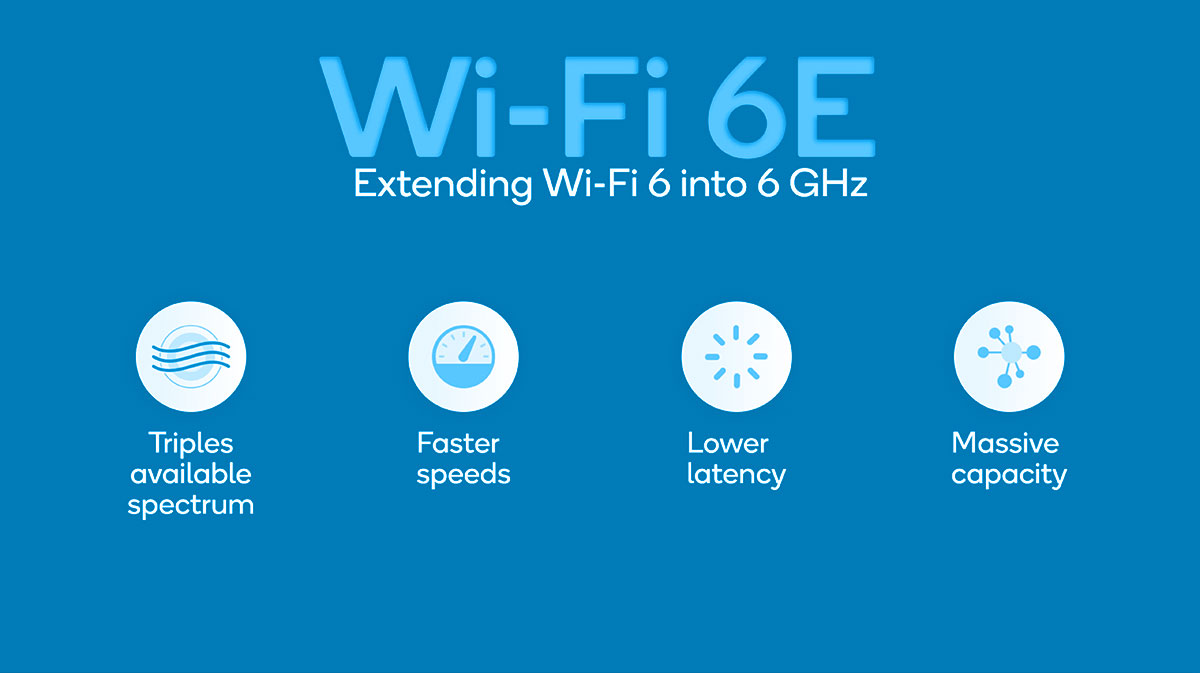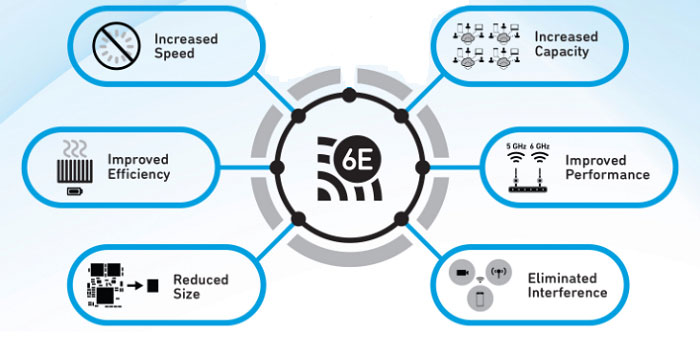
With more than 1,200 MHz of unlicensed spectrum available, more than triple the number of high-bandwidth channels available, and freedom from supporting legacy devices, Wi-Fi 6E promises a massive leap in
wireless performance and efficiency.
The WiFi 6E standard is relatively recent. How is it different from the previous generation?
WiFi 6E is a new standard based on WiFi 6. It differs from its predecessor with 14 new 80 MHz channels, plus 7 160 MHz channels, as well as the ability to operate in the 6 GHz band. All this provides greater bandwidth, the ability to support more devices and transmit a large amount of data at the same time. Contact our experts for a turnkey WiFi 6 Solution for your Hotel.
How will these differences affect the Dubai based business? Who will need this standard first? If the company has a small office, does it need such WiFi?
The new standard is needed primarily where the density of devices is high. If employees in your office sit close to each other, if each of them has several devices connected to the Internet at the same time, if they have to work with a large amount of information, WiFi 6E will make work more comfortable even in a small organization with a small number of employees. Not to mention enterprises with a large number of equipment, sensors and other devices connected by IoT.
How can Hotels in Middle East exist in the new reality? Learn about the present and future of the hospitality IT industry and solutions at the HITEC, Dubai on May 24-26. Follow the link for more details

But the new format will also be relevant in large rooms or spaces: these are stadiums, concert and exhibition halls: in all these places there are many visitors, each of whom has a device connected to the Internet, and WiFi 6E allows them to work without disturbing each other friend.
Does the Dubai consumer need 6E at all? Will a person who mostly just watches series online notice a difference?
Technology is constantly evolving and Dubai is leading for the front. Video resolution is getting higher, cloud gaming is gaining popularity, and the number of devices owned by the average consumer is not decreasing. Dubai needed WiFi 6E for multiple catgory of consumers like gamers who want to play without delay (and not only on a computer or console, but also in virtual reality glasses), and ordinary consumers who want to watch Netflix shows on a tablet while lying on the couch after work. And so as not to interfere with other people in the apartment. The same thing is critically important for Dubai business and consumer: high speed, good communication quality and absence of interference. In homes and offices, WiFi 6E helps make this happen.
Is the UAE Ready for Wi-Fi 6(E)?
One of the lessons learned during the recent pandemic is that companies are changing how they do
business. For example, employees may not need to report to the office or campus. Instead, they may
prefer to work remotely, either part-time or full-time, but expect the same company’s enterprise Wi-Fi
experience as well. As a result, the company is not just in one building but distributed everywhere
employees work. We now have an infinite enterprise. Wi-Fi 6 and Wi-Fi 6E are part of a wireless
paradigm shift toward infinitely distributed connectivity. Corporate organizations need connectivity for
anyone anywhere with devices or applications to ensure productivity on an ongoing basis.
Why is 6E even better than Wi-Fi 6?
Technically, there is no theoretical performance difference between Wi-Fi6 and Wi-Fi6E when it comes
to speed. Both are based on the same IEEE802.1ax-2020 standard. The only difference is one operates in
the legacy 2.4GHz and 5GHz band, and Wi-Fi 6E operates in the newly opened 6GHz band.
However, Wi-Fi6E will more likely be faster in practice because the 6GHz frequency spectrum offers
more Wide-Band channels (HT-80 and HT160) and no interference from legacy (802.11a/n/ac) devices.
80MHz and 160MHz channels were available in previous generations (802.11ac and 802.11ax in the 5
GHz band) but were not required and were often not supported or used due to lack of spectrum
availability.
The 6 GHz band opens a contiguous spectrum sufficient to take full advantage of these wide
channels and will be part of most 6 GHz implementations to take advantage of the highest multi-Gbps
throughput. For example, a 2×2 802.11ax module would offer a 2.4 Gbps maximum theoretical data
rate. The results would be better and close to the theoretical max in 6GHz frequency.
1200 MHz of contiguous spectrum in 6GHz enables 7 new 160 MHz channels and 14 new 80 MHz
channels. Network administrators can enable the widespread use of wider channels without the risk of
interference from overlapping channels. Deployment of a wider channel will unlock multi-gigabit Wi-Fi
speeds for end-users.
Is the transition to 6E inevitable? And what will happen after it?
Dubai is the city adopting the change of latest technologies quickly and Wi-Fi 6E sooner or later will be generally accepted – it’s only a matter of time. As for the new communication standards that will replace 6E, today the industry is working on a new generation of WiFi technologies – WiFi 7 (IEEE 802.11be).









